Many years ago, when arcades were in trend, there was a significant genre that represented them: rail shooters. In titles of this genre, the player doesn’t control the character’s movement; the game takes care of that, as if we were riding in a roller coaster. Additionally, arcade shooters incorporated a light gun, allowing players to aim at various targets that appeared on the screen.
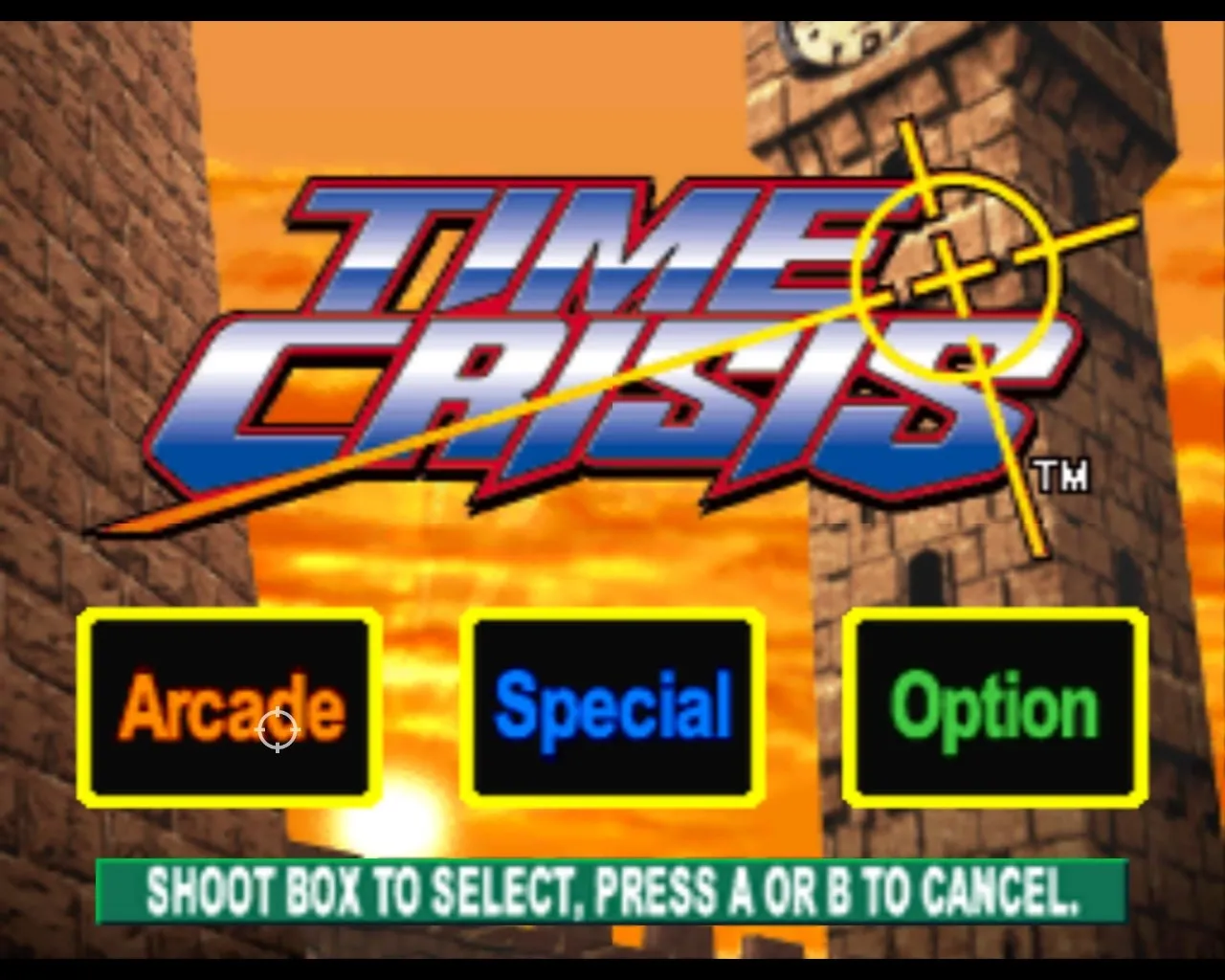
In the case of Time Crisis, the light gun came with another accessory. By pressing a pedal, we would leave cover to open fire. We had one minute to complete each scenario, with the possibility of extending that time by a few seconds if we took down certain enemies. If this time limit expired, the game ended. So, we had to take the risk of peeking out, aiming, and shooting at enemies: all in an instant. This was particularly thrilling, especially when facing off against the final bosses.
With its innovative concept, Time Crisis became the king of this genre in the amusement arcades, being flashy and incredibly fun. As a result, Namco didn’t hesitate to adapt the title for the PS1, the most popular console of the time. However, the original game ran on hardware that exceeded the capabilities of Sony’s console, necessitating several changes for this version.
To begin with, the developers had to halve the frame rate and reduce the polygon count. On the other hand, the console couldn’t emulate real-time lighting, but they solved this by manually coloring each polygon. Additionally, there was another clever performance trick: they limited the number of enemies on screen, causing them to appear slightly later.


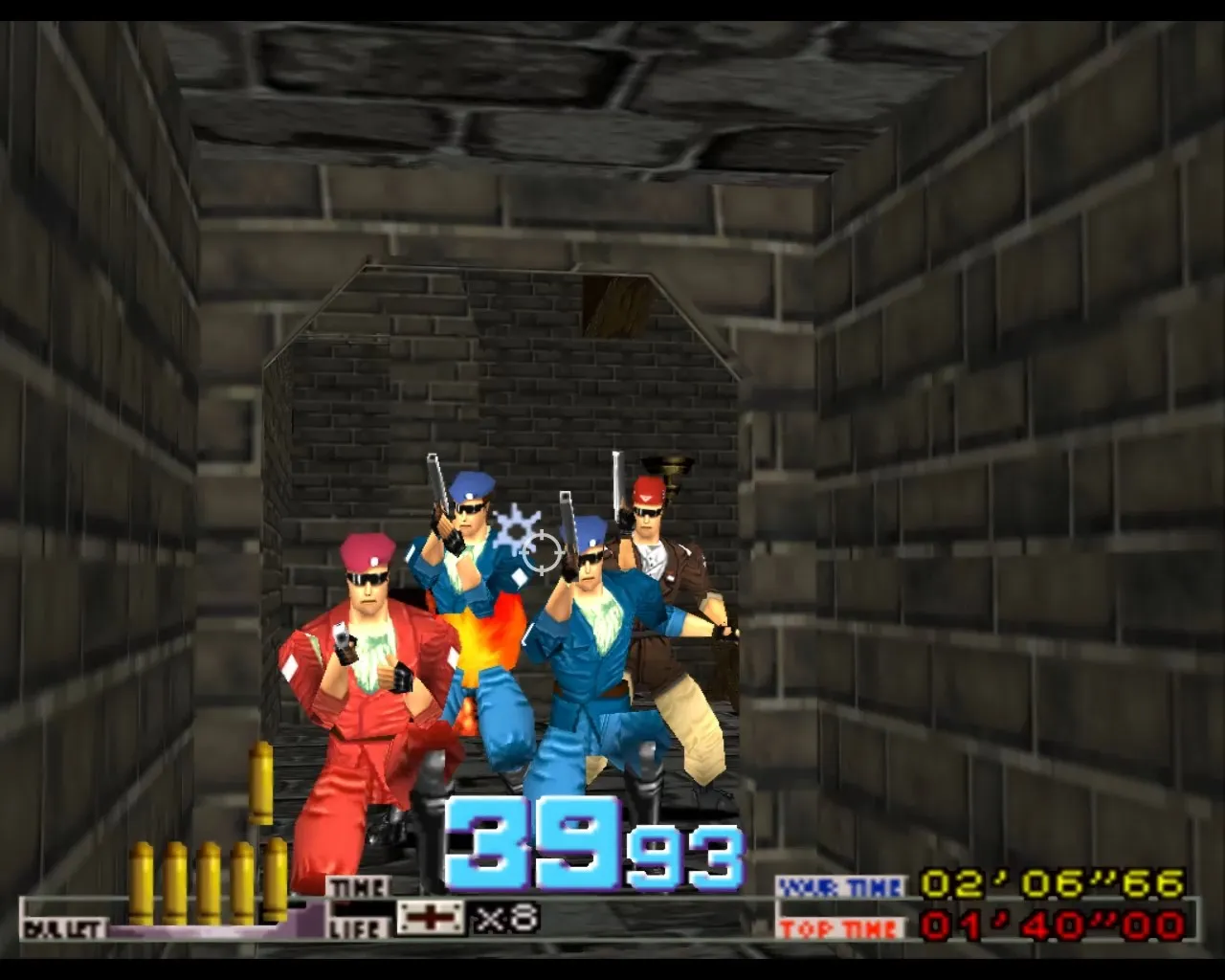
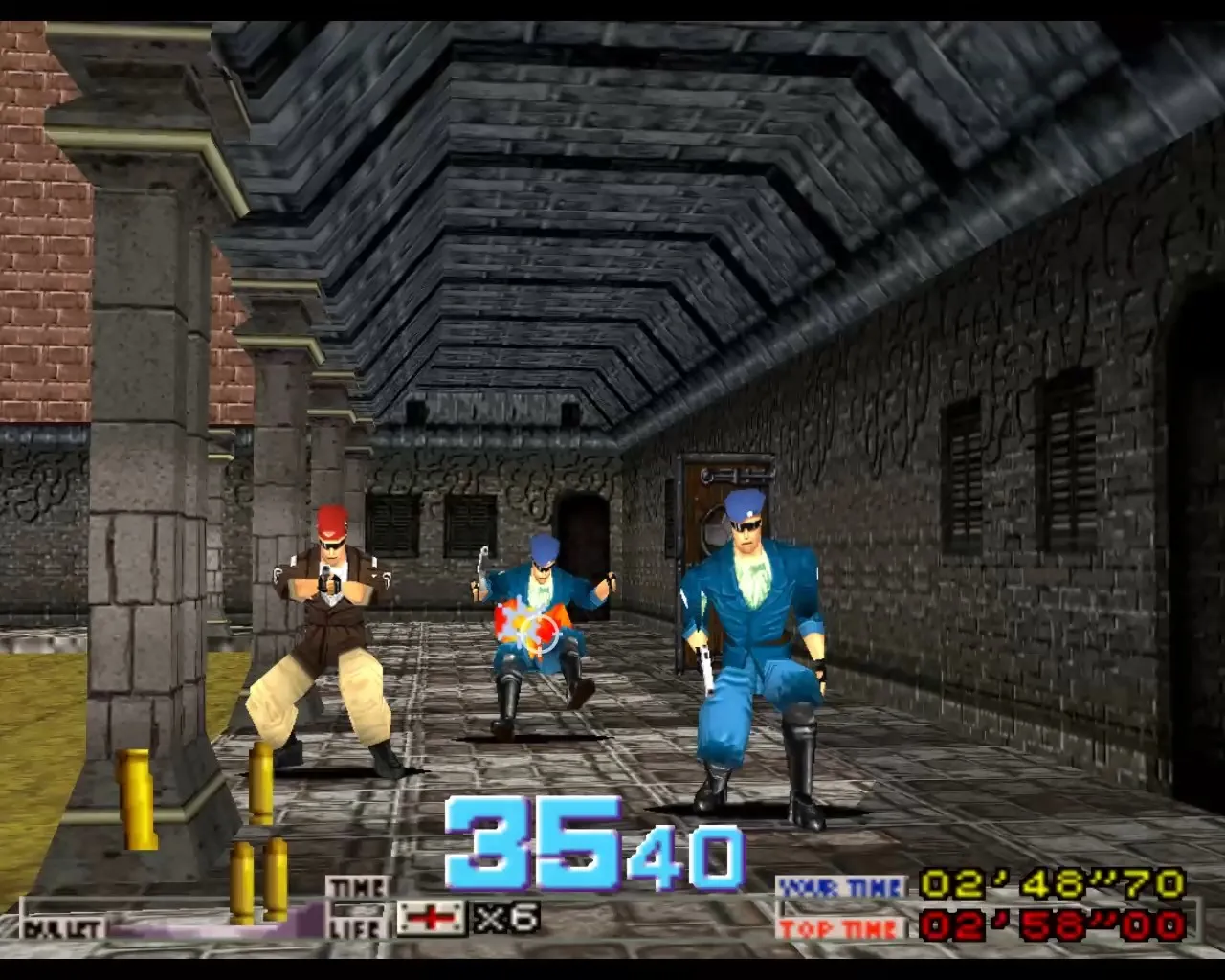
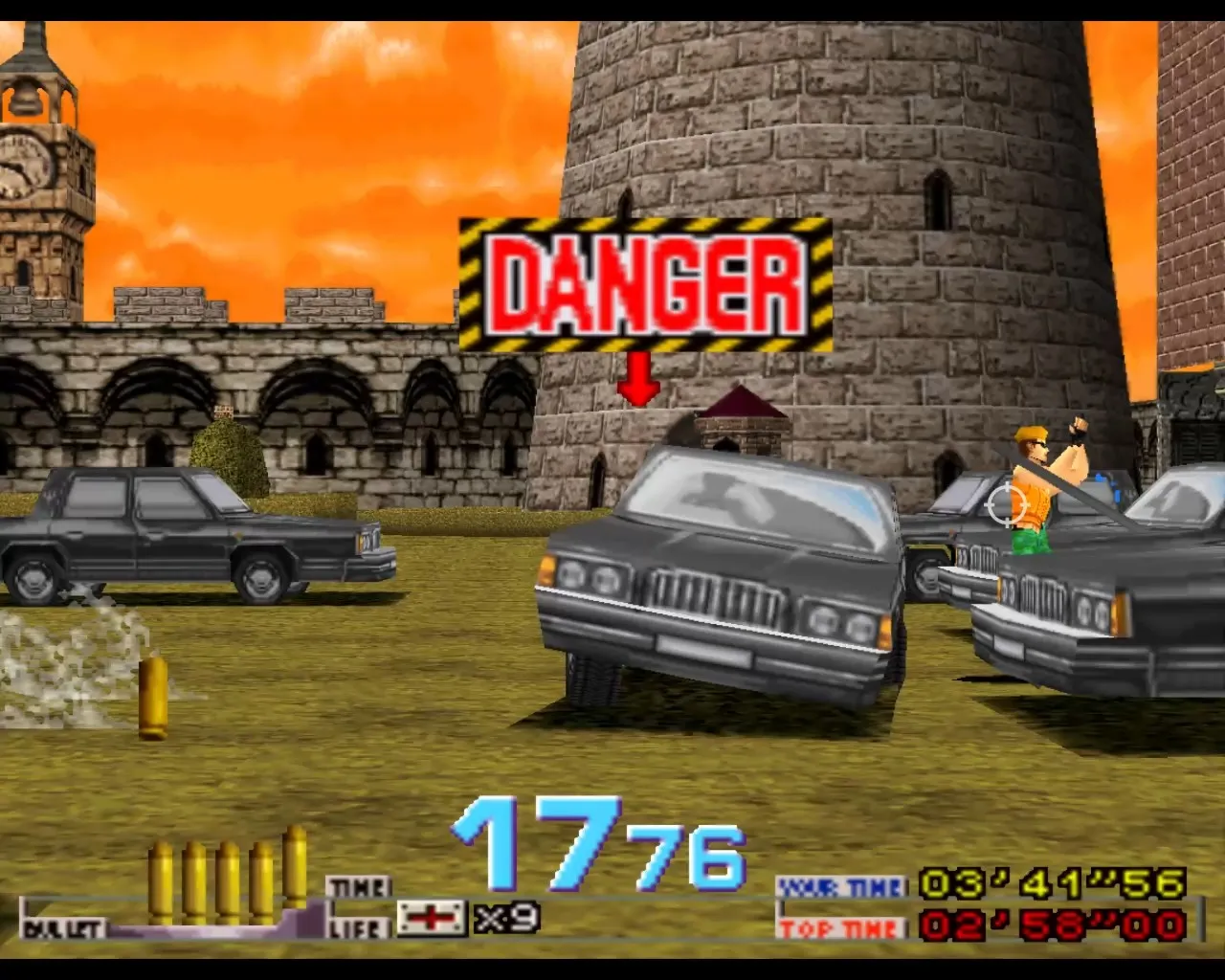
It is worth mentioning that in its console version, Time Crisis came bundled with Namco’s light gun because playing the game with a regular controller wouldn’t have been the same, and the game also featured an exclusive campaign. As was customary, Namco’s arcade game conversions for consoles always brought some interesting extra content.
This special mode is set in a hotel; players were put to the test in terms of speed and accuracy. Depending on their skill, the game would take an alternate route, resulting in two possible endings. Thanks to this addition, the game stood out compared to other titles of the genre released for Sony’s console. While the new campaign was still relatively short, which is typical for arcade games, it expanded nicely the content of the home version of the game.
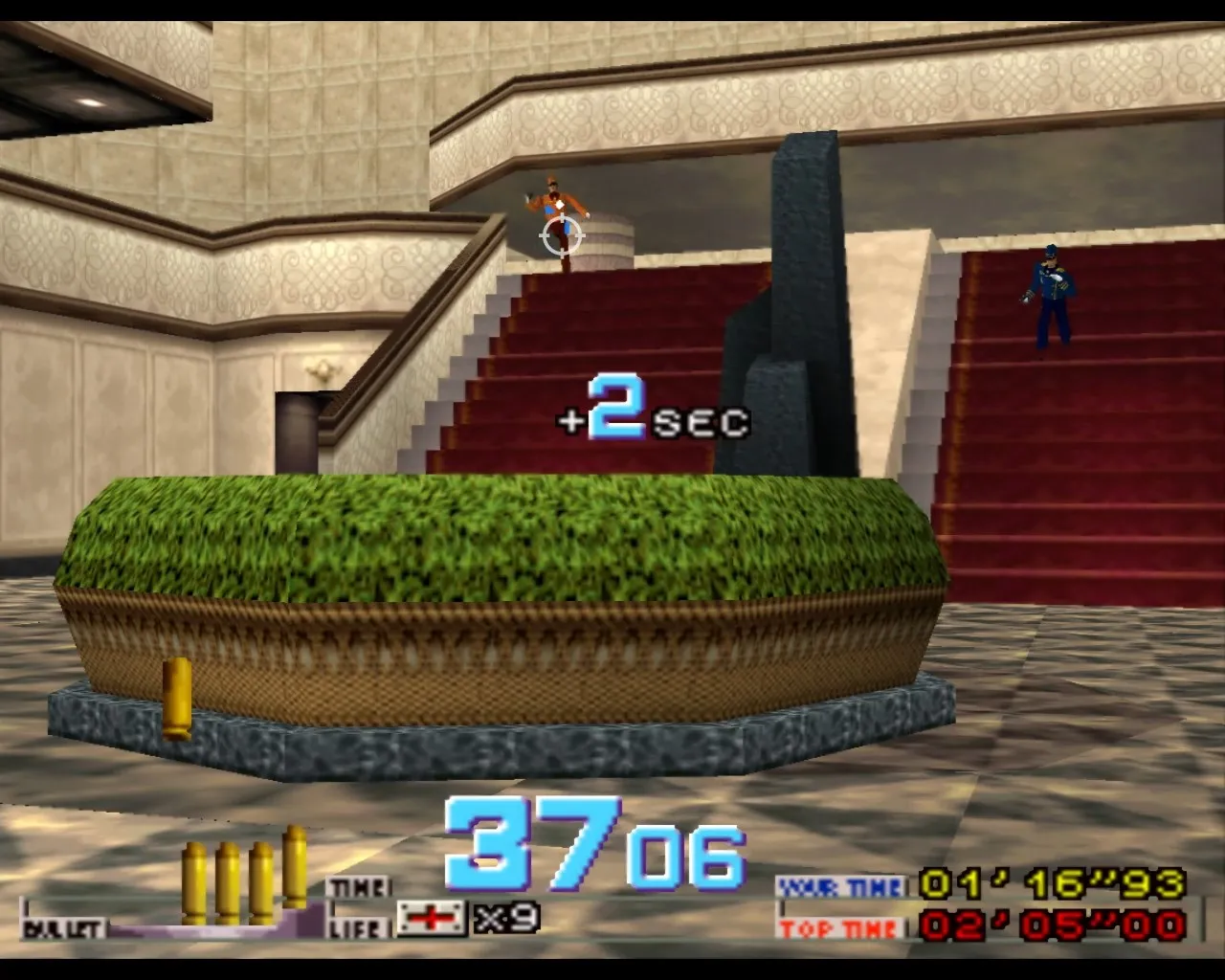
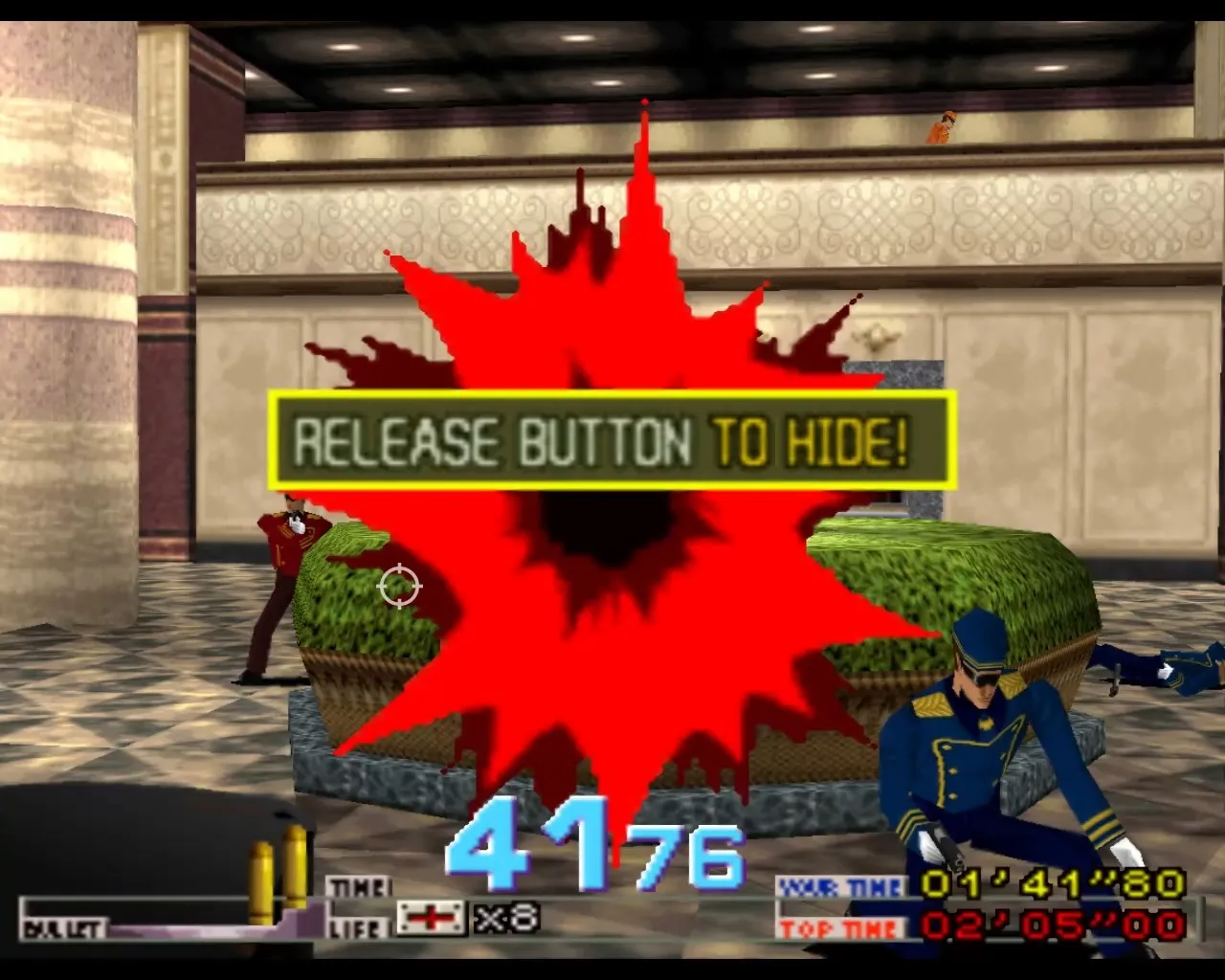
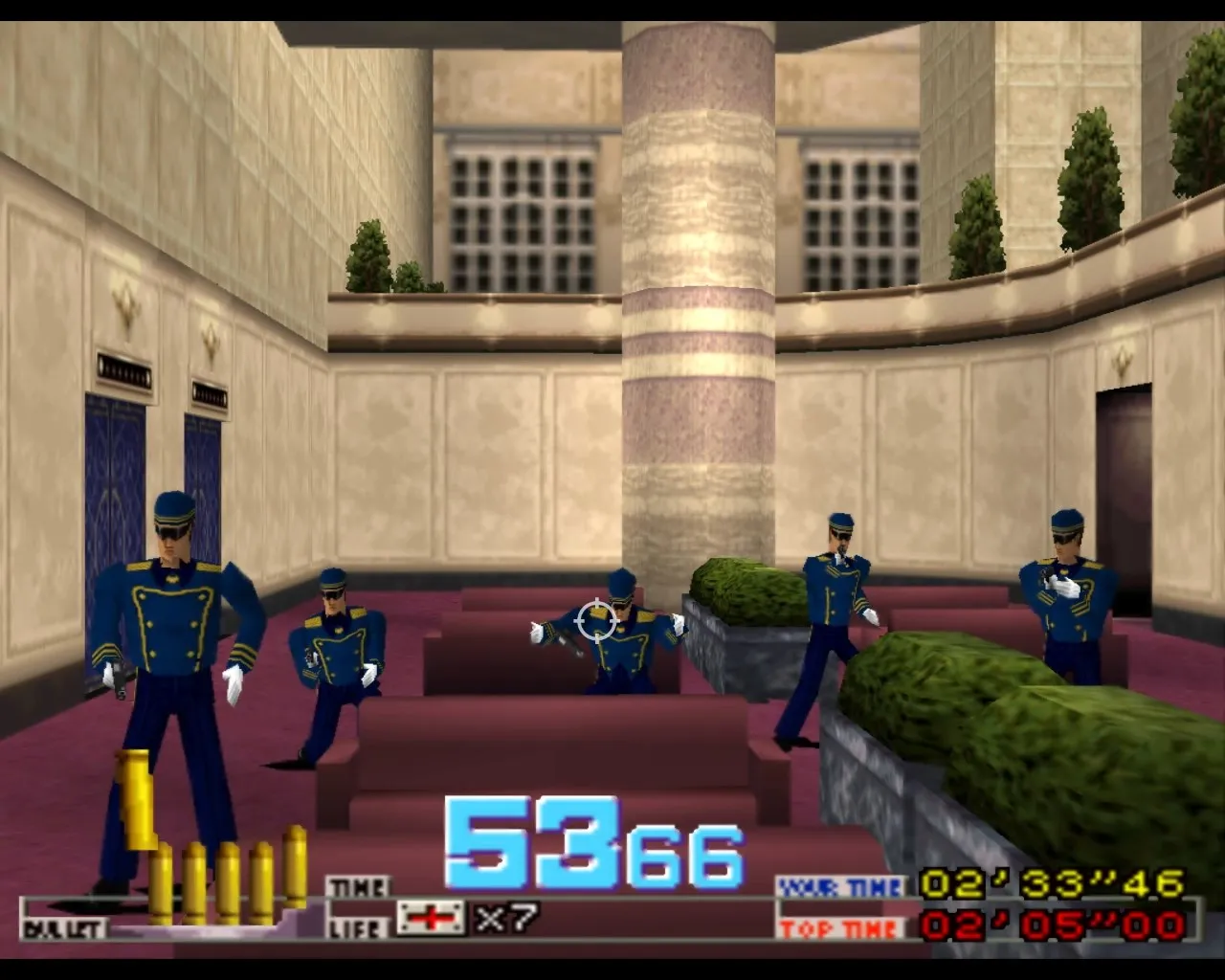
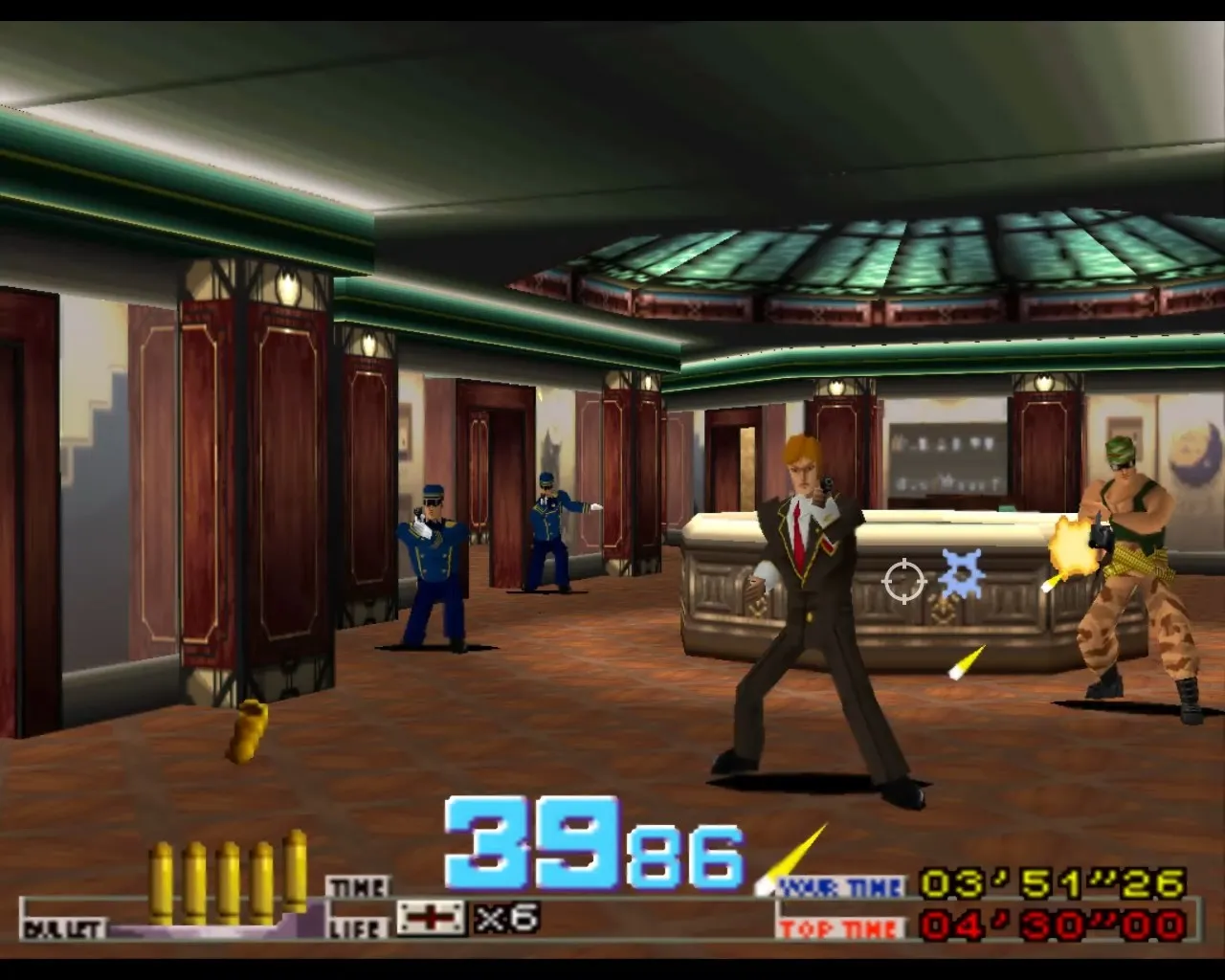

In the end, as someone who had the chance to enjoy playing both versions, I can only say that Namco did an outstanding job despite the technological limitations of the PS1. They really managed to faithfully translate the experience of an excellent arcade game to be played at home.